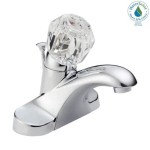How To Remove Mold From Bathroom Tiles
Mold in the bathroom is a common problem, especially in humid areas. Mold can grow on bathroom tiles, grout, and even the walls and ceilings. Not only is mold unsightly, but it can also be a health hazard, triggering allergies and respiratory problems. Thankfully, removing mold from bathroom tiles is a relatively straightforward process. With the right tools and techniques, you can effectively eliminate the mold and prevent it from returning.
1. Gather Your Supplies
Before tackling mold removal, ensure you have the necessary supplies. This will make the process more efficient and ensure you have everything you need on hand. The following items are essential for removing mold from bathroom tiles:
- Cleaning Gloves: Wear gloves to protect your skin from contact with the mold and cleaning solutions.
- Eye Protection: Wear safety goggles or glasses to prevent any cleaning solutions from splashing into your eyes.
- Ventilation: Open windows and doors to ensure adequate ventilation while cleaning. This will help to reduce the concentration of mold spores in the air.
- Bleach: Bleach is a powerful mold killer. However, it can be harsh on surfaces, so use it with caution.
- Borax: Borax is a natural and effective mold remover. It is less harsh than bleach but still effective.
- Vinegar: White vinegar is a natural disinfectant and can be used to clean mold from bathroom tiles. It is particularly effective on mildew.
- Spray Bottle: A spray bottle is useful for applying cleaning solutions to the tiles.
- Scrub Brush: A scrub brush is essential for scrubbing away mold from the tiles and grout.
- Microfiber Cloth: A microfiber cloth will help to remove any remaining cleaning solution and residue.
- Old Toothbrush: An old toothbrush is useful for cleaning mold from hard-to-reach areas, such as grout lines.
- Vacuum Cleaner: Use a vacuum cleaner with a HEPA filter to remove any mold spores or debris before you begin cleaning.
2. Preparation and Cleaning
Once you have gathered your supplies, it is time to prepare the bathroom for cleaning. This step ensures a clean and safe environment for removing mold and prevents any cross-contamination. Follow these steps:
- Clear the Area: Remove any items from the bathroom that are in the way of the affected tiles, such as towels, bath mats, and toiletries.
- Vacuum: Use a vacuum cleaner with a HEPA filter to remove any loose mold spores or debris from the affected area. This will help to prevent the spread of spores during cleaning.
- Protect Yourself: Put on your gloves and eye protection before you begin cleaning. Remember to maintain good ventilation.
- Choose Your Cleaning Solution: Depending on the severity of the mold and your personal preference, you can choose from bleach, borax, or vinegar. For stubborn mold, bleach is the most effective. Borax is a safer alternative, while vinegar is a natural option for lighter cases.
- Apply the Solution: Mix your chosen cleaning solution according to the manufacturer's instructions. Apply the solution to the affected tiles using a spray bottle. Ensure all areas with mold are covered. Let the solution sit for 10-15 minutes to allow it to penetrate the mold.
- Scrub: Use a stiff-bristled scrub brush to scrub the mold-affected tiles and grout. Pay particular attention to the grout lines, as they are often where mold accumulates.
- Rinse: Thoroughly rinse the tiles and grout with clean water to remove any remaining cleaning solution and mold debris.
3. Preventing Mold Growth
Once you have removed the mold from your bathroom tiles, it is important to take steps to prevent it from returning. Mold thrives in warm, humid environments, so controlling moisture levels is crucial. Here are some tips to prevent mold growth in your bathroom:
- Improve Ventilation: Ensure the bathroom is well-ventilated. This can be achieved by using an exhaust fan during and after showers or baths. Leaving a window open for a short period can also improve ventilation.
- Wipe Down Surfaces: After each shower or bath, wipe down the tiles, grout, and shower walls with a clean, dry cloth. This will prevent moisture from accumulating on surfaces and promote faster drying.
- Repair Leaks: Promptly fix any leaks in the bathroom, as this can create a breeding ground for mold. This includes fixing leaky faucets, showerheads, and pipes.
- Use a Dehumidifier: If your bathroom is consistently humid, consider using a dehumidifier to remove excess moisture from the air. This will help to create a less favorable environment for mold growth.
- Apply a Mold-Resistant Sealant: Apply a mold-resistant sealant to the grout lines to prevent moisture from penetrating and creating a suitable environment for mold growth.
Regularly inspecting your bathroom for signs of mold growth and following these prevention tips can keep your bathroom clean, healthy, and mold-free.

How Do I Remove Black Mould From Shower Floor

How To Clean The Grout Between Your Wall Tiles And Revamp Mouldy Mastic

Black Mold In The Shower How To Clean It Kitchen With Matt

How To Clean Mold In Shower Grout Tips And Tricks Certified Care

How To Remove Mold From Shower Caulk Or Tile Grout Fabulously Clean

Black Mold In The Shower How To Clean It Kitchen With Matt

How Can I Clean Mildew From Grout Puroclean Hq

What Is The Best Way To Clean Shower Grout Mold Anita S Housekeeping

Kill Bathroom Mould Without Bleach Electrodry Blogs

Cleaning Mrs Hinch Fans Share Easy Ways To Clean Tile Grout Express Co
Related Posts







